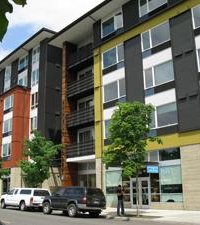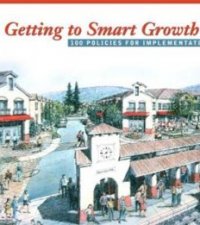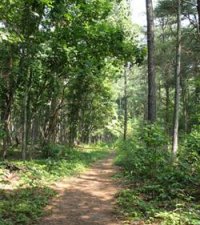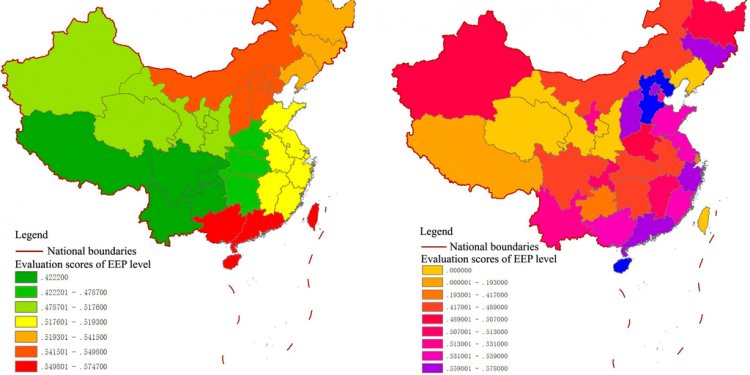
Environmental Protection Strategies
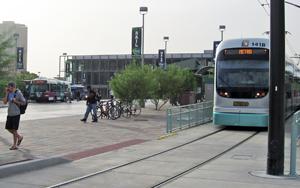 "Smart growth" covers a range of development and conservation strategies that help protect our health and natural environment and make our communities more attractive, economically stronger, and more socially diverse.
"Smart growth" covers a range of development and conservation strategies that help protect our health and natural environment and make our communities more attractive, economically stronger, and more socially diverse.
Development decisions affect many of the things that touch people's everyday lives — their homes, their health, the schools their children attend, the taxes they pay, their daily commute, the natural environment around them, economic growth in their community, and opportunities to achieve their dreams and goals. What, where, and how communities build will affect their residents' lives for generations to come.
Communities of all sizes across the country are using creative strategies to develop in ways that preserve natural lands and critical environmental areas, protect water and air quality, and reuse already-developed land.
- They conserve resources by reinvesting in existing infrastructure and rehabilitating historic buildings.
- By designing neighborhoods that have homes near shops, offices, schools, houses of worship, parks, and other amenities, communities give residents and visitors the option of walking, bicycling, taking public transportation, or driving as they go about their business.
- A range of different housing types makes it possible for senior citizens to stay in their neighborhoods as they age, young people to afford their first home, and families at all stages in between to find a safe, attractive home they can afford.
- Through smart growth approaches that enhance neighborhoods and involve residents in development decisions, these communities are creating vibrant places to live, work, and play.
- The high quality of life makes these communities economically competitive, creates business opportunities, and strengthens the local tax base.
- Mix land uses.
- Take advantage of compact building design.
- Create a range of housing opportunities and choices.
- Create walkable neighborhoods.
- Foster distinctive, attractive communities with a strong sense of place.
- Preserve open space, farmland, natural beauty, and critical environmental areas.
- Strengthen and direct development towards existing communities.
- Provide a variety of transportation choices.
- Make development decisions predictable, fair, and cost effective.
- Encourage community and stakeholder collaboration in development decisions.
What does EPA's Smart Growth Program do?
EPA's Smart Growth Program helps communities improve their development practices and get the type of development they want. We work with local, state, and national experts to discover and encourage development strategies that protect human health and the environment, create economic opportunities, and provide attractive and affordable neighborhoods for people of all income levels. The Smart Growth Program is housed in EPA’s Office of Sustainable Communities, which also coordinates EPA’s green building work.
EPA's Smart Growth Program:
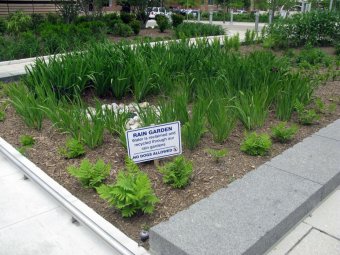 Where can I find information about grants?
Where can I find information about grants?
Please visit our Smart Growth Grants and Other Funding page for more information. All the grants that we offer will be announced on that page and on www.grants.gov.
Why does EPA work on smart growth issues?
EPA’s mission is to protect human health and the environment. How and where communities develop affects human health and the environment. Therefore, EPA works on smart growth issues to help communities develop in ways that are better for health and the environment.
Policies and regulations vary by community and by state. Many federal policies, particularly those related to the environment, transportation, and housing, affect how communities develop, but the federal government generally does not directly regulate development. The federal government can help states and municipalities better understand the impacts of development patterns, but development decisions are predominantly under state and local jurisdiction.
Besides the Smart Growth Program, other EPA programs that work on issues related to smart growth include:
What are some environmental benefits of smart growth strategies?
Development guided by smart growth principles can minimize air and water pollution, reduce greenhouse gas emissions, encourage cleanup and reuse of contaminated properties, and preserve natural lands. Where and how we develop directly affects natural areas and wildlife habitat and replaces natural cover with impervious surfaces such as concrete or asphalt.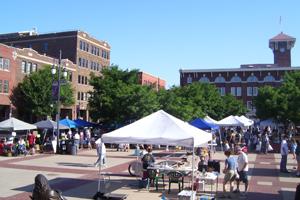 Development patterns and practices also indirectly affect environmental quality since they influence how easily people can get around.
Development patterns and practices also indirectly affect environmental quality since they influence how easily people can get around.
Smart growth practices can lessen the environmental impacts of development with techniques that include encouraging compact development, reducing impervious surfaces, safeguarding environmentally sensitive areas, mixing land uses (e.g., homes, offices, and shops), promoting public transit, and improving pedestrian and bicycle amenities.
For more information on the environmental effects of development and the benefits of smart growth, see Our Built and Natural Environments: A Technical Review of the Interactions between Land Use, Transportation, and Environmental Quality (2nd edition).
Air Quality
The Tempe, Arizona, Transportation Center is a hub for light rail and buses and includes storage and repair facilities for bicycles.
Compact communities with a mix of uses and transportation options make it easy for people to choose to walk, bicycle, or take public transit instead of driving. People who choose to drive generally can drive shorter distances. Less travel by motor vehicles can reduce air pollution by smog-forming emissions and other pollutants.
Climate Change
Tupelo Alley is a mixed-use, LEED Gold building near public transit in Portland, Oregon.
Transportation options and land use patterns that reduce air pollution also cut the emissions of greenhouse gases that contribute to climate change. Using energy-efficient, green building techniques can reduce greenhouse gas emissions from energy use. Smart growth strategies can also help communities prepare for the impacts of climate change.
Water Quality
This rain garden in Washington, D.C., captures and reuses stormwater.
Compact development and open space preservation can help protect water quality by reducing the amount of paved surfaces and by allowing natural lands to filter rainwater and runoff before it reaches drinking-water supplies. Green infrastructure techniques, which mimic natural processes to capture, hold, absorb, and filter stormwater, can be incorporated into streets, sidewalks, parking lots, and buildings.
